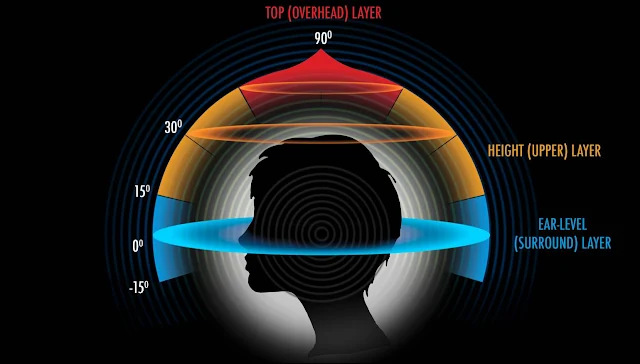Why Spatial Audio Is a Game-Changer for Emerging Artists
You may have heard the buzz around spatial audio, but trust us—it’s more than just industry chatter. This technology is revolutionizing the way listeners experience music. For up-and-coming artists, understanding and utilizing spatial audio is no longer optional; it’s a necessity. This guide will dive into the science behind spatial audio, why it’s crucial for your music career, and a step-by-step guide to getting started.
What Is Spatial Audio?
The Science of Spatial Audio
At its core, spatial audio replicates how humans perceive sound in real-world environments. Unlike stereo or surround sound, which create a left-right sound field, spatial audio generates a full 3D soundscape. Each sound element is placed in this space using Head-Related Transfer Functions (HRTFs) and object-based audio technology, allowing listeners to experience audio as if it were coming from various directions.
How Spatial Audio Creates a Personalized Listening Experience
Spatial audio is an advancement in sound engineering, thanks largely to HRTFs, which customize sound profiles for each listener. By tailoring audio to the unique anatomical features of a person’s ears, it creates a more immersive and personalized listening experience. This leads to a stronger emotional connection between the listener and the music.
Object-based audio further enhances creative control by allowing you to isolate different sounds—such as vocals and instruments—and position them exactly where you want in the 3D space, opening up new possibilities for your music.
Spatial Audio vs. Surround Sound
Spatial audio and surround sound are often confused. Surround sound relies on speaker placement, typically using a 5.1 or 7.1 system, to create an auditory field. Spatial audio, by contrast, creates a 360-degree sound experience using HRTFs and object-based audio, mimicking how sound interacts with the ear.
Head-Related Transfer Functions (HRTFs)
HRTFs personalize the audio experience based on the listener’s ear shape and size, delivering a more authentic experience than traditional surround sound. This makes spatial audio an indispensable tool for artists looking to innovate.
Dolby Atmos: A Key Player in Spatial Audio
Dolby Atmos is a specific audio format designed to place and move sound in a three-dimensional space. It uses individual audio "objects" that can be positioned in any direction, creating a more dynamic and immersive listening experience.
While Dolby Atmos is one method of delivering 3D sound, spatial audio is a broader concept that refers to the overall experience of sound in a 3D environment. For instance, Apple’s spatial audio integrates head tracking to adjust sound in real-time based on movement, adding another layer of immersion.
Why Spatial Audio Matters for Artists
Elevated Emotional Engagement
Spatial audio heightens emotional engagement, making listeners feel like they’re inside the music. This technology makes it easier to create live-performance-like experiences in recorded tracks, offering a sense of immersion that stereo sound simply can’t replicate.
Creative Possibilities
Spatial audio allows artists to place different sounds—like vocals and instruments—within a 3D space, offering creative opportunities that were previously unattainable. For example, you can make sounds move across the room, creating layers of depth and interaction.
Future-Proofing Your Art
With major platforms like Apple Music and Spotify moving toward spatial audio, embracing this technology now will help you stay ahead of the curve. Producing Dolby Atmos versions of your tracks positions you as an innovative artist working with cutting-edge technology.
How to Record in Spatial Audio
Music Gear You’ll Need
To get started, you’ll need to calibrate your microphone for spatial audio recording, ensuring accurate sound capture in 3D space.
- Ambisonic Microphone: Brands like Sweetwater offer high-end models, such as the Sennheiser AMBEO VR Mic, designed for 3D audio capture.
Assigning Audio Objects in Your DAW
Once your mic is calibrated, assign each audio element as an "object" within your DAW (Digital Audio Workstation). Tools like the Spatial Audio Designer in Logic Pro X allow you to position sounds dynamically, adding depth and movement to your track.
- DAWs with Spatial Audio Support: Logic Pro X includes a ‘Spatial Audio Designer’ plugin to help you work in a 3D audio space.
Binaural Rendering for Headphone Compatibility
Since many listeners use headphones, you’ll need to ensure that your spatial audio experience translates well with binaural rendering, which allows the 3D audio experience to be compatible with stereo systems.
Mastering for Spatial Audio
Mastering in spatial audio requires additional attention to spatial details. Tools like Dolby Atmos provide specialized services to ensure your music retains its quality across all devices.
Distribute Your Music in Dolby Atmos
To stand out in a crowded music market, releasing tracks in Dolby Atmos can give your audience a more immersive experience. Platforms like Apple Music, Tidal, and Amazon Music now support spatial audio and Dolby Atmos, offering new opportunities to reach listeners.
Apple Music: A large library of Dolby Atmos tracks and spatial audio support is available for devices like the iPhone XS and iPad Pro.
Tidal: Supports Dolby Atmos tracks on Android devices and headphones.
Amazon Music: Also offers Dolby Atmos, though it’s limited to certain devices.
The Strategic Advantage of Spatial Audio
As an emerging artist, producing music in Dolby Atmos gives you a distinct edge by offering listeners a unique auditory experience. Platforms like Apple Music feature a Dolby Atmos badge on immersive tracks, highlighting them for fans.
Leveraging Head-Tracking Technology
Available on devices like AirPods Max, head-tracking technology adjusts sound based on the listener’s movement, creating a more interactive and personalized experience. This is especially useful in gaming, movies, and immersive music.
Closing Thoughts: The Future of Music with Spatial Audio
As spatial audio continues to gain traction, it’s reshaping the music industry. It’s not just about the technology—it’s about offering listeners a completely new way to experience music. By embracing spatial audio, you’re not just creating songs; you’re crafting an immersive, interactive experience.





.webp)



0 Commentaires